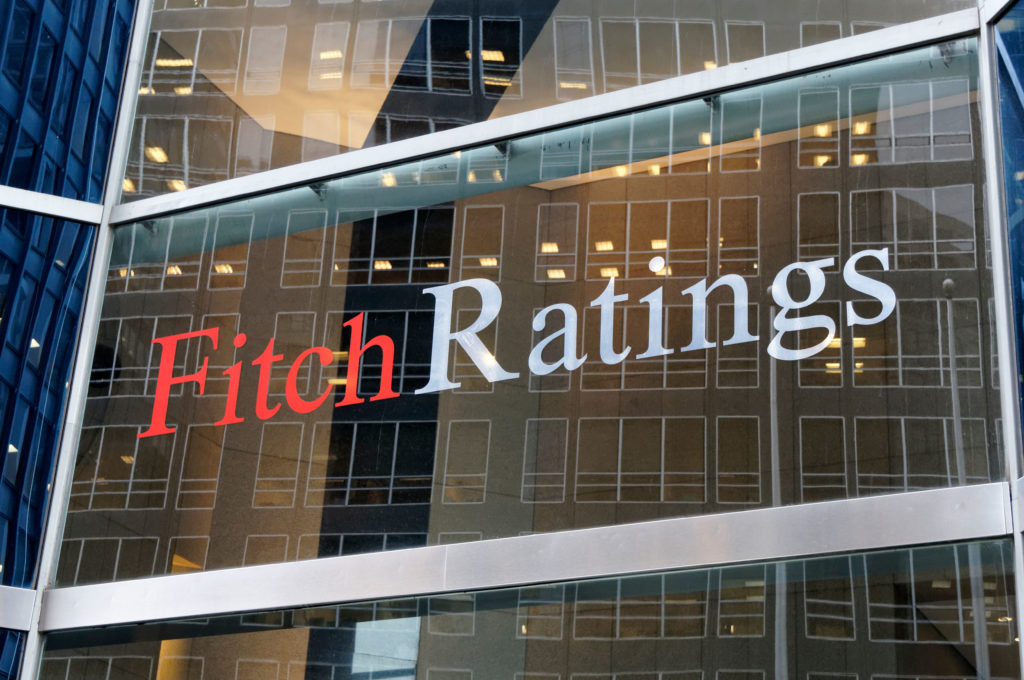Fitch confirmed Ukreximbank’s resilience rating to “B-“, and the long-term issuer default ratings (IDRs) of the state-owned PrivatBank, Oschadbank, and Ukrgasbank at “B” with a positive outlook.
The stability rating (VR) of Ukreximbank was raised to “B-” from “CCC+”, while Oschadbank and Ukrgasbank were confirmed at “B-“, and PrivatBank – “B”.
Fitch upgraded Ukreximbank’s Eurobond rating from “CCC-” to “CCC”.
UKREXIMBANK
Fitch said that the affirmation of Ukreximbank’s IDRs, Support Rating and Support Rating Floor reflects the agency’s view of support the bank could receive from the government of Ukraine (B/Positive), if needed. The Positive outlook on the IDRs mirrors that on the sovereign.
The propensity of the Ukrainian authorities to provide support to Ukreximbank remains high, in Fitch’s view, taking into account the bank’s 100 percent state ownership, its systemic importance (a moderate 9 percent of sector net loans at the end of August 2021) and record of capital support, most recently an equity injection into Ukreximbank in the third quarter of 2020.
“We believe extraordinary capital support to the bank is possible, if needed, while the ability of the authorities to provide support at all times, particularly in foreign currency, is limited as indicated by the level of Ukraine’s rating of ‘B’,” Fitch said in a report.
The affirmation of National Ratings at ‘AAUkr’ with a Stable outlook reflects the bank’s unchanged creditworthiness relative to that of peers within Ukraine, it added.
PRIVATBANK
Fitch said that Privat’s VR captured the bank’s leading domestic franchise, strong performance metrics to date and reduced pressures on the bank’s standalone profile from the pandemic.
The VR also continues to reflect the bank’s sensitivity to the cyclical Ukrainian environment and high linkage to the sovereign’s credit profile due to sizeable holdings of state debt, the agency said in a report.
Assets are dominated by cash, interbank placements and sovereign bonds, while net loans made up a small 17 percent at the end of the first half of 2021. The share of impaired loans amounted to a high 74 percent, largely represented by legacy loans and almost fully covered by total loan loss allowances. Privatbank’s loan book originated post-nationalisation is of decent quality. The impaired loans origination ratio in its credit cards portfolio amounted to a low 1 percent in the first half of 2021.
UKRGASBANK
Fitch said that the affirmation of Ukrgasbank’s IDRs, Support Rating and Support Rating Floor reflects Fitch’s view of support the bank could receive from the government of Ukraine (B/Positive), if needed. The Positive outlook on the IDRs mirrors that on the sovereign.
In Fitch’s view, the propensity of the Ukrainian authorities to provide support to Ukrgasbank remains high. This takes into account its majority (95 percent) state ownership, its systemic importance (a moderate 7 percent of sector net loans and 4 percent of retail customer accounts at the end of August 2021), the small cost of potential support, given the bank’s well-provisioned legacy problems, and a record of capital support provided to Ukraine’s state-owned banks.
“We believe extraordinary capital support to the bank is possible, if needed, while the ability of the authorities to provide support at all times, particularly in foreign currency, is limited as indicated by Ukraine’s rating of ‘B’,” Fitch said in a report.
OSHADBANK
Oschadbank’s VR captures a still significant stock of problem loans, material lending dollarisation, high capital encumbrance, as impaired loans might require additional provisioning in an adverse scenario and sensitivity to Ukraine’s cyclical operating environment.
The VR also reflects the bank’s healthy domestic franchise (10 percent and 14 percent market shares in sector net loans and deposits), limited impact of the pandemic on Oschadbank’s credit profile and recent improvement in the bank’s core profitability, Fitch said in a report.
Net loans made up 28 percent of assets at the end of the first half of 2021, with the rest being sovereign bonds, cash and interbank placements. The share of impaired loans remained high at 39 percent at the end of the first half of 2021, albeit down from 59 percent at the end of 2019, helped by sizeable write-offs in 2020-first half of 2021. Impaired loans were 66 percent covered by total loan loss allowances, reflecting the bank’s expectations of recoveries.

